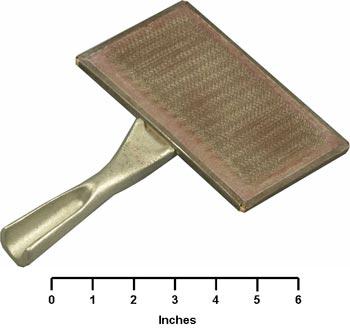Feedstuff/Equipment Discovery: Livestock Equipment Identification
Feedstuff/Equipment Discovery: Livestock Equipment Identification
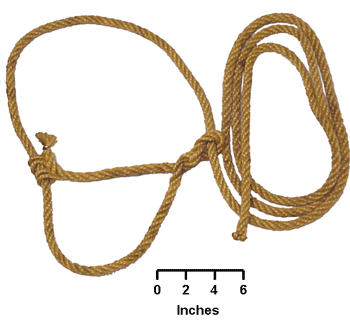
Feedstuff & Equipment Discovery Navigation
A combination lamb castrator and tail docker. The blades are used to cut off the end of the scrotum and dock tails, and the teeth on the end are used to remove the testicles.
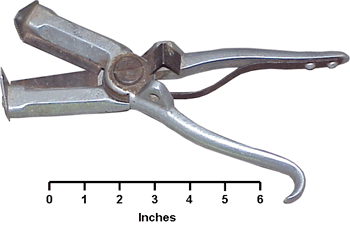
A nontoxic, weather-resistant marking crayon for temporary identification of livestock.
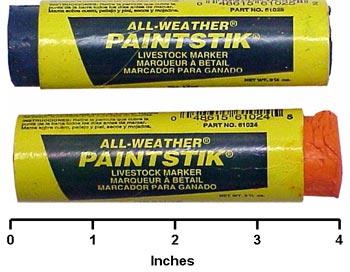
A device used to deposit boar semen into reproductive tract of a gilt or sow. The spiral tip or button end of the pipette is inserted into the cervix where the semen is deposited.
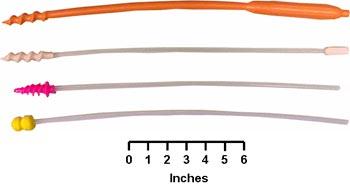
Used to administer various pills (medications) to cattle and horses. It is placed down the throat to administer the pills.

Used to dehorn calves, sheep, and goats.
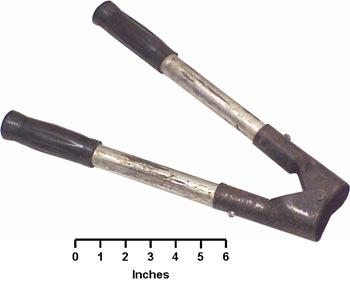
Used to clip and groom the hair on cattle, sheep, horses, and goats.
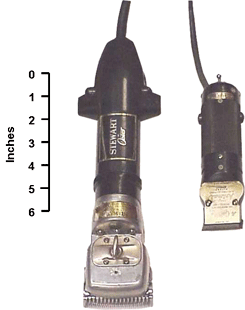
The twitch is placed on the horse's nose to restrain the horse as required.

Used by farriers to remove nail clinches prior to removing the horse shoe.
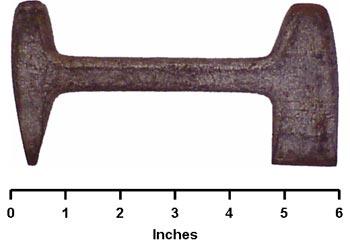
The part of cattle clippers that guides the hair towards the clipper cutter.
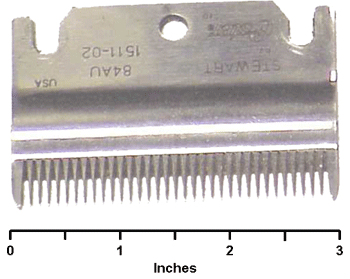
The part of the cattle clippers that rapidly slides back and forth across the clipper comb to cut the hair.
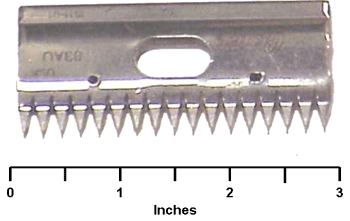
Used by farriers to remove nails from hoof one at a time. It reduces damage to the hoof wall.
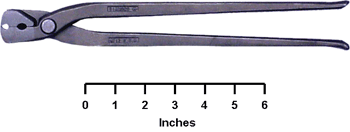
Used to remove dirt and loose hair from cattle when grooming.
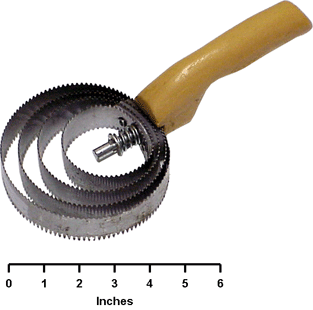
Used to measure precise amounts of a vaccine and to administer vaccines to livestock and horses.
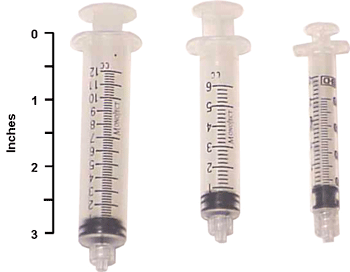
Used to administer precise amounts of liquid medications to cattle, sheep, goats, and horses. The hooked portion is placed in the animal's mouth to administer the liquid medication.
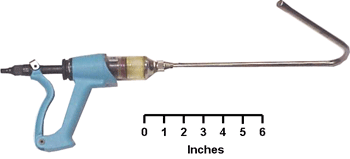
Used to clip small notches in a pig's ear to provide a form of permanent, individual pig identification.
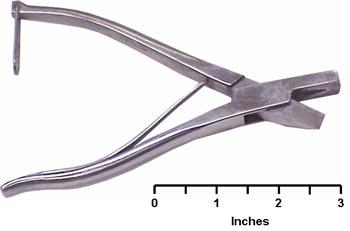
Placed in an animal's ear to provide an easy to read form of individual identification.
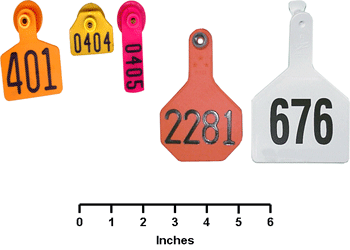
Used to place ear tags into the ears of cattle, sheep, goats, and pigs to provide a means of animal identification.
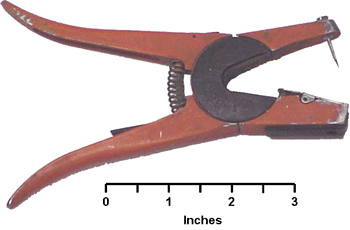
An instrument used for the bloodless castration (young male calves, lambs, and goats) and docking of tails (young lams and goats). It is used to place a small rubber ring over the scrotum or tail to shut off circulation.
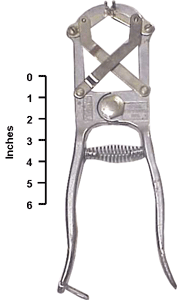
Used to brand cattle. The branding iron can be designed to brand numbers, letters, or a unique farm brand.
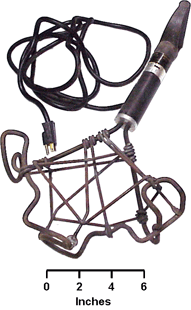
Used to dehorn calves, sheep, and goats with no loss of blood. It applies high temperature to all cells at the base of the horn button, and in 4-6 weeks the horn button will drop off.
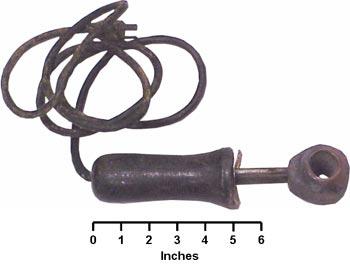
Used to dock the tails of lambs and piglets. It cauterizes as it cuts the tail to eliminate excessive bleeding.
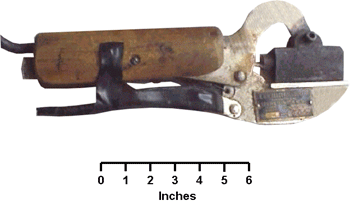
A device used to test the strength of the electrical current running through an electric fence.
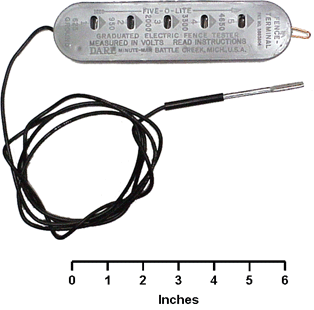
Used to quickly roll up electric fence wire for storage, or to quickly let out electric fence wire when putting up an electric fence.
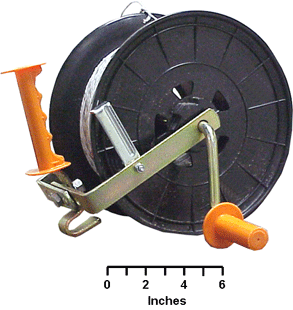
Used to shear and groom the wool from sheep.
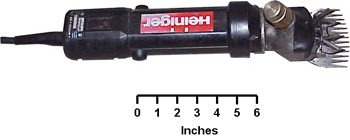
An instrument used for the bloodless castration of young male calves, lambs, and goats by severing (crushing) the testicular cord.
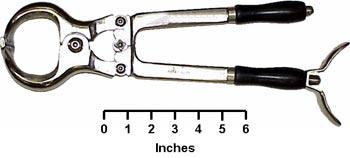
An instrument used for castrating young calves, lambs, goats, and piglets. It both crushes and cuts at the same time to minimize blood loss. Can also be used to dock tails.
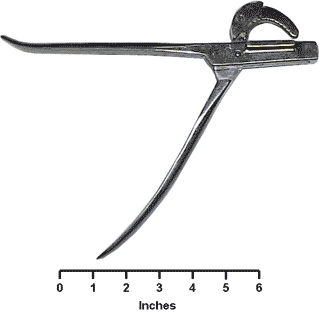
An instrument used to control vaginal prolapse in ewes.
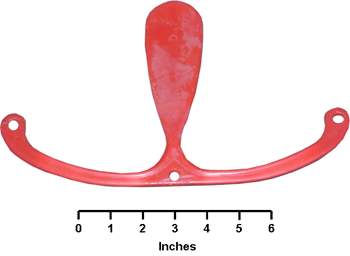
Used to collect semen from stallions. This particular style (Colorado Artificial Vagina) is heavier than other styles, but is preferred in colder climates to prevent cold shock to the semen.
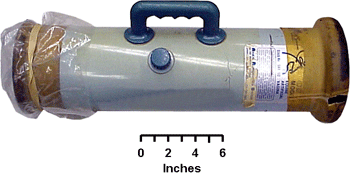
Used when building fences. These pliers will cut, splice, and stretch wire, and drive and pull staples.
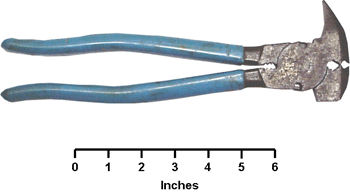
Used to trim hooves of cattle, sheep, and goats to help prevent foot disease.
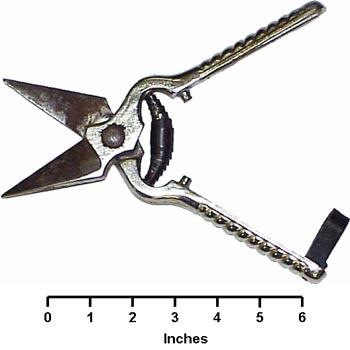
Used to freeze brand cattle to provide a form of identification.
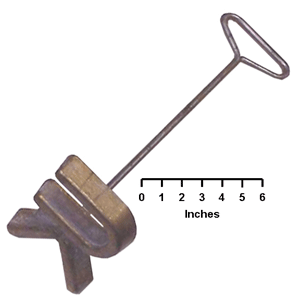
Used to shear and groom the wool from sheep. Blade lengths typically range from 3 to 6-1/2 inches.
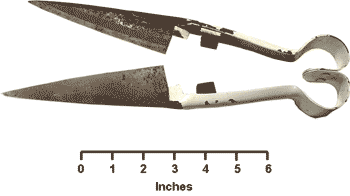
Used to weigh young animals, feed ingredients to include in a diet, or the amount of feed to feed to an animal.
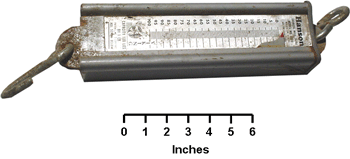
Used to restrain hogs that are too big to catch and hold by hand. The cable portion of the hog catcher (snare) is placed over the hog's snout to restrain the hog.

Placed in the tip of the snout or in the flesh between the two nostrils to prevent hogs grown outdoors from rooting holes in the ground.
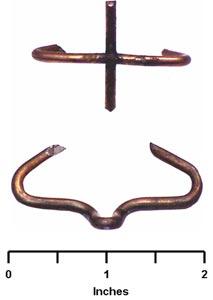
Used to place nose rings in pigs (in the tip of the snout or in the flesh between the two nostrils) to prevent outdoor-grown hogs from rooting holes in the ground.
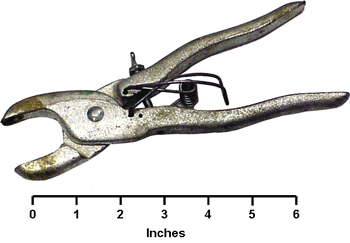
Used by farriers to clinch nails to the hoof wall during shoeing.
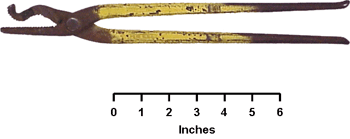
Used by farriers to trim the excess sole and frog from the hoof.
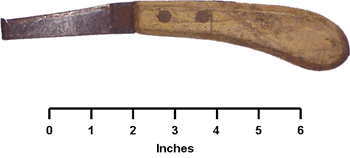
Used for the regular daily cleaning of a horse's foot.
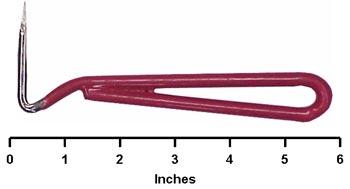
Also called a one person twitch, the twitch is placed on the horse's nose to restrain the horse as required.
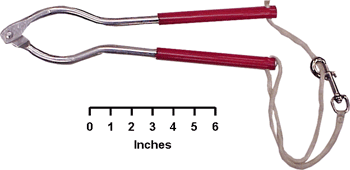
A device used to effectively feed newborn lambs the ewe's colostrum. Primarily used for newborn lambs suffering from exposure and weakness.
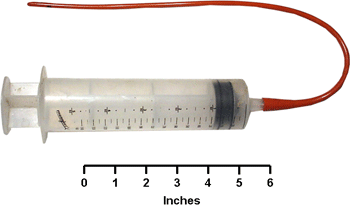
An instrument used to assist in pulling lambs from ewes that are experiencing lambing difficulties (dystocia).

Used to clip off the very sharp, small needle teeth (4 pair) in the mouths of newborn piglets to prevent damage to the sow's udder as the piglets nurse.
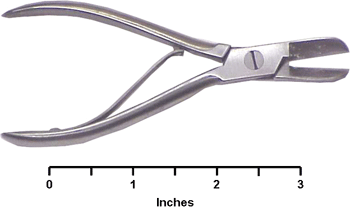
An automatic waterer used to provide clean, fresh water to pigs.
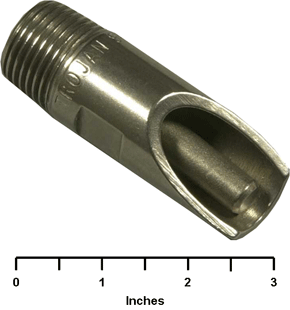
Used to help pull unborn calves from cows that are experiencing calving problems (dystocia).
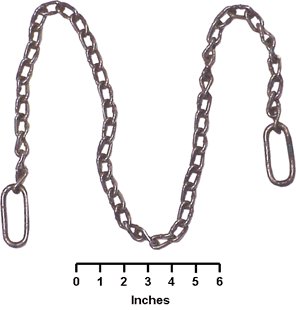
Used to paint (stencil) a number on livestock to provide a form of identification.
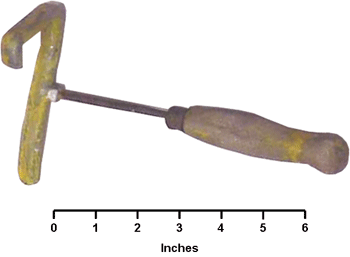
Used to give vaccinations to multiple animals without needing to reload the syringe with more vaccine.
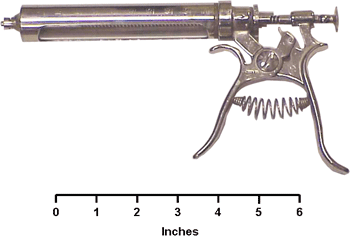
Placed over the hand and arm when artificially breeding cattle or when pulling newborn animals during difficult births (dystocia).
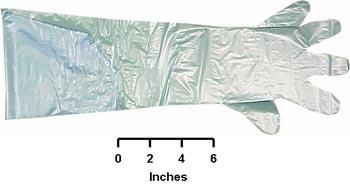
A non-rusting, electric fencing tape made of some type of plastic material (such as polyvinyl or polyester) with 5 to 10 very thin metal wire strands running the entire length of the tape for electrical conductivity. Widths of the tape range from 1/2-inch to 1-1/2 inches.

A non-rusting, electric fencing wire made of some type of plastic material (such as polyvinyl or polyester) with 3 to 10 very thin metal wire strands running the entire length of the poly wire for electrical conductivity. Typical width is about 1/8-inch.

Used by farriers to remove horse shoes when a nail puller is not available. Note the beveled end which is different from a hoof nipper.
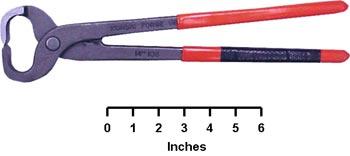
Used to insert a RALGRO pellet (for growth promotion) under the loose skin and above the cartilage on the back side of a beef calf's ear.
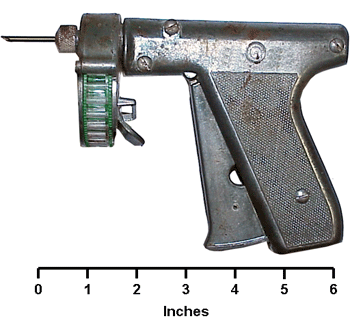
The cartridge containing the RALGRO pellets (for growth promotion) that is placed in the RALGRO Pellet Injector for placing implants in beef calves ears.
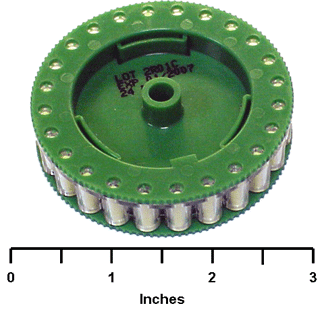
A device placed on rams that shows when a ewe has been serviced. It is equipped with a marking crayon that places a mark on the ewe when the ram mounts her.
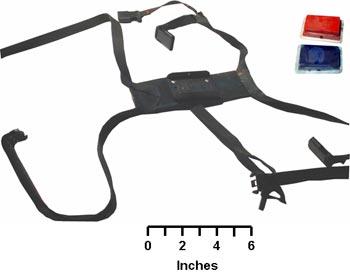
Used by farriers to smooth the foot after the excess hoof wall has been removed during trimming.
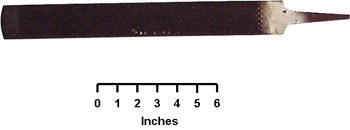
Used to lead (walk) cattle. Typically made of 1/2-inch to 3/4-inch diameter rope with a 4 to 8 foot lead rope.
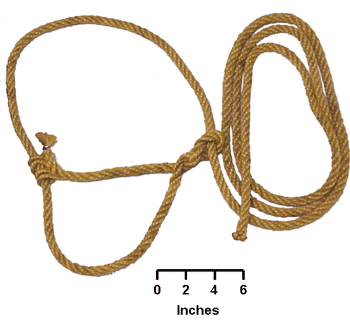
The twitch is placed on the horse's nose to restrain the horse as required.
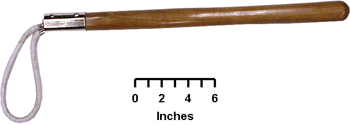
Used to lead (walk) sheep. Typically made of 1/2-inch to 5/8-inch diameter rope with a 3 to 5 foot lead rope.
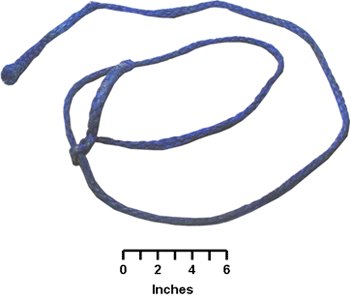
A non-rusting, electric fence insulator made from porcelain. Used to make corner turns.
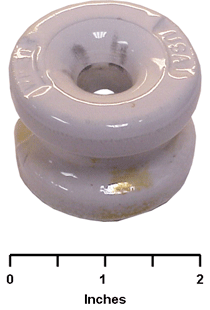
A magnate used to remove metal from the stomach of cattle that they inadvertently consumed while eating.
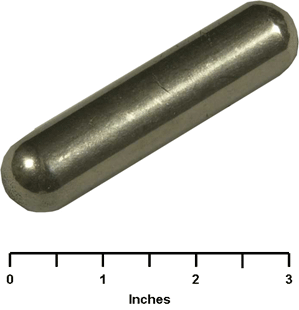
Device used to trim the hooves of sheep and goats.
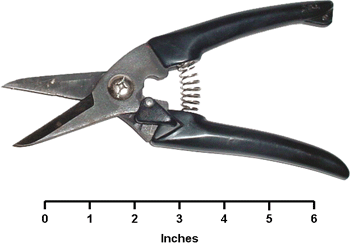
A non-rusting, round post electric fence insulator. Will work on round posts up to about 1/2-inch diameter.
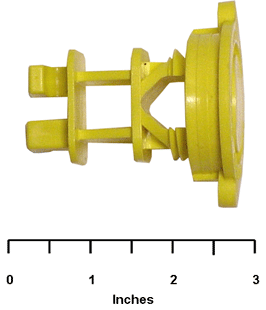
The Straw is what the semen is stored in (while placed in the semen storage tank), and the A.I. Pipette is the device used to deposit the semen in the cow's uterus.
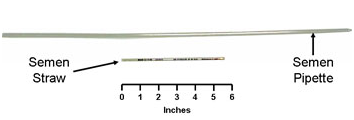
A non-rusting, electric fence insulator that can be nailed to wooden posts.
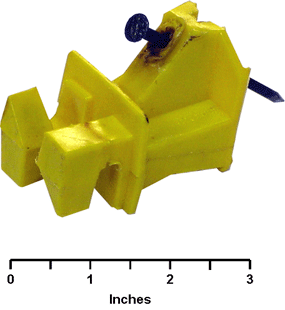
Used by veterinarians for various surgical procedures, and by farmers for various health related and management practices (such as castration).
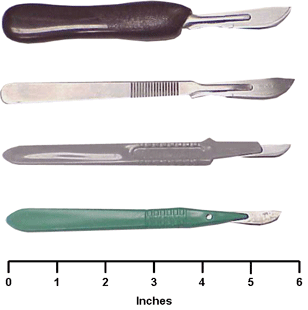
Used to comb (groom) the hair of cattle.
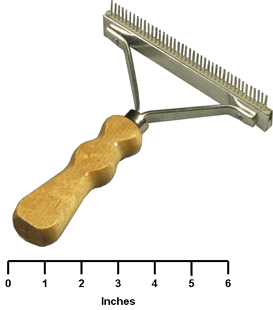
Disposable bottle used to store a single dose of fresh boar semen until the semen is artificially deposited into the gilt or sow.
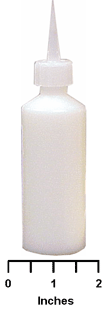
Used to store frozen semen until it is ready for use. The tank holds liquid nitrogen to keep the semen frozen.
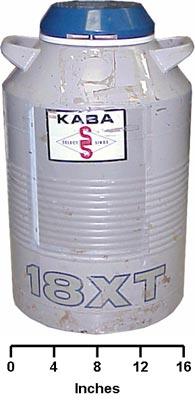
Used by shearers to quickly replace the clipper comb and clipper cutter on cabble clippers.
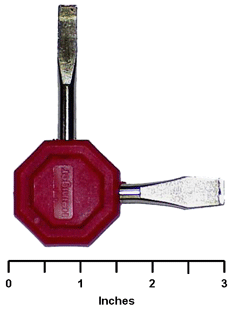
Used by farriers for driving nails when shoeing a horse.
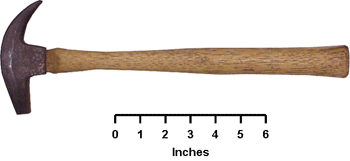
Used to place tattoo numbers on pigs (typically on the side or on the side of the shoulder) as a form of permanent identification that will remain on the carcass after the pig is slaughtered.
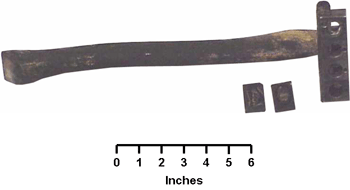
Used to insert a SYNOVEX implant (for growth promotion) under the loose skin and above the cartilage on the back side of a beef calf's ear.
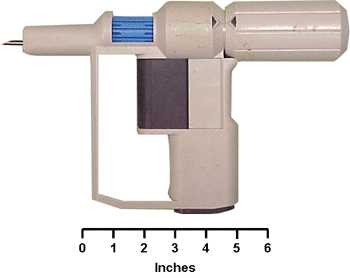
The cartridge containing the SYNOVEX implant (for growth promotion) that is placed in the SYNOVEX Implant Gun for placing the implants in beef calves ears.
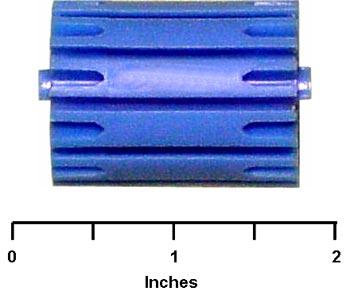
Used for injecting vaccines and medication (intramuscularly, subcutaneously, intraperitoneally) into livestock and horses. The most typical lengths are 1/2-inch to 1-1/2 inches long, and typical diameters range from 20 to 16 guage. Needle hubs can be made of metal or some type of plastic.
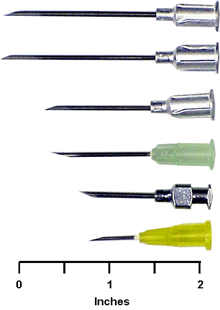
Used to place tattoo numbers on a pig's ear to serve as a form of permanent identification.
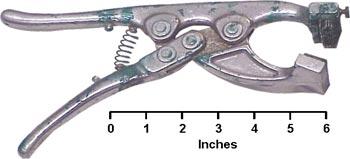
A non-rusting, electric fence insulator that fits snugly around the web and flange of T-posts.
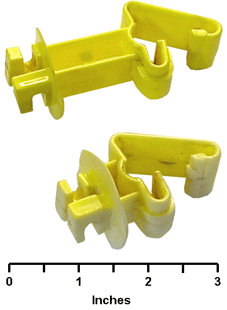
Can be placed in a watering trough or an unheated waterer to prevent water from freezing in wintertime.
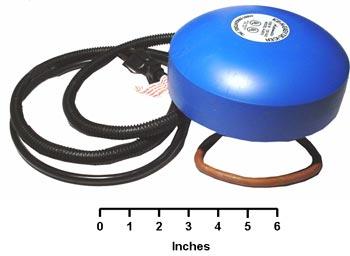
Used to card (comb or rake) the wool on sheep prior to shearing.
